Today we’re going to review the differences between the best-selling smartphone thermal imagers from the two best companies in the business
We’ll be explaining what the differences are between the Flir One, Flir One Pro and the Flir One Pro LT. Then we will look at the Seek Thermal Compact, CompactPro and CompactXR and see how they stack against the Flir cameras
We’ll be explaining what the differences are between the Flir One, Flir One Pro and the Flir One Pro LT. Then we will look at the Seek Thermal Compact, CompactPro and CompactXR and see how they stack against the Flir cameras
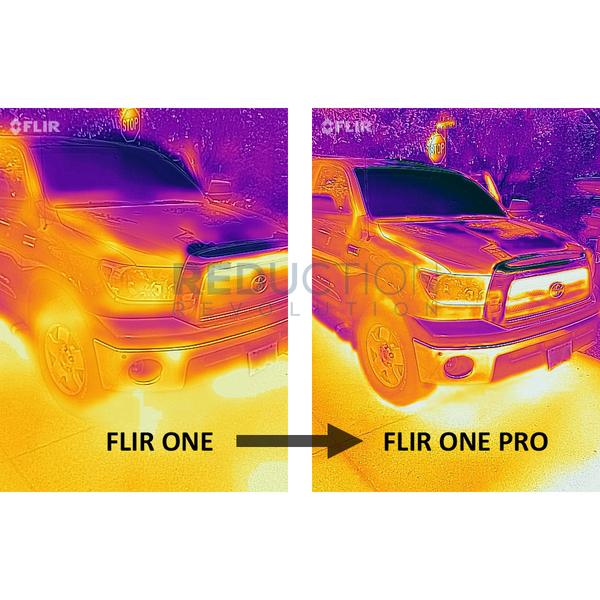
| Product | Type | Resolution | Battery capacity | Waterproof | LCD screen | Price |
|---|---|---|---|---|---|---|
FLIR ONE Pro 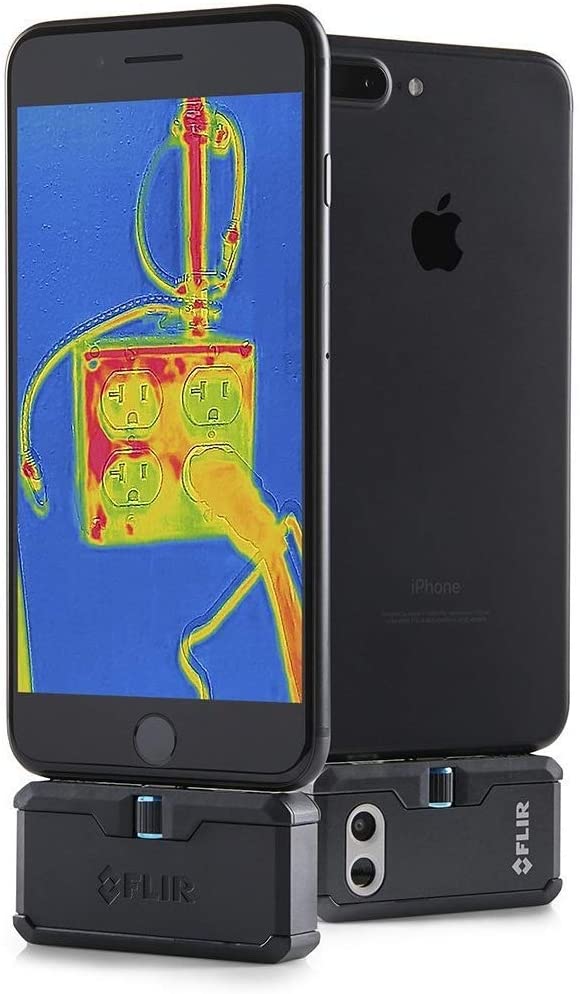 | Smartphone (2 different versions – Android & iOS) | 160 x 120 | 45 minutes | No | Uses Smartphone screen | Click for more info |
FLIR ONE Gen 3 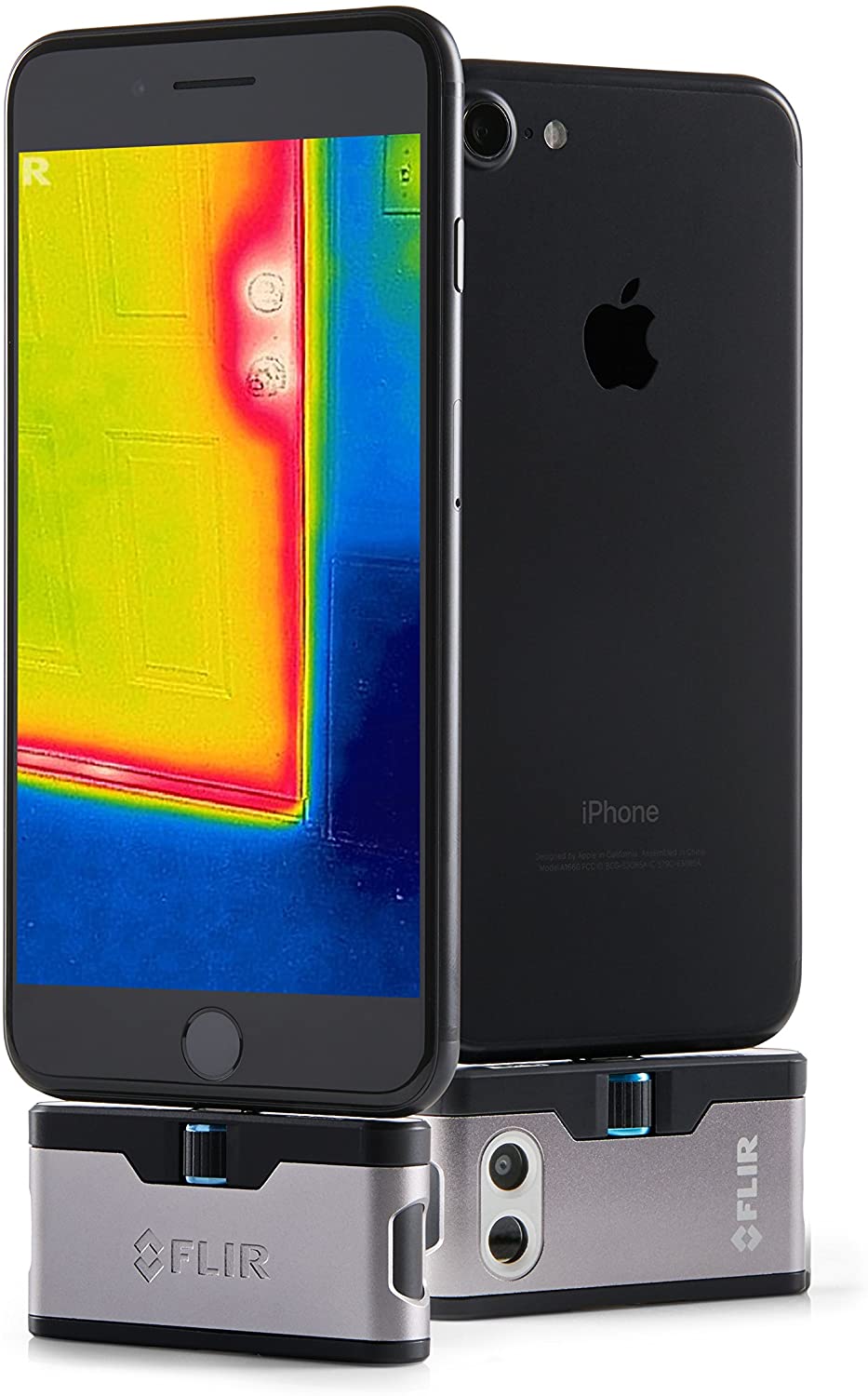 | Smartphone (2 different versions – Android & iOS) | 80 x 60 | 45 minutes | No | No | Click for more info |
FLIR ONE PRO LT 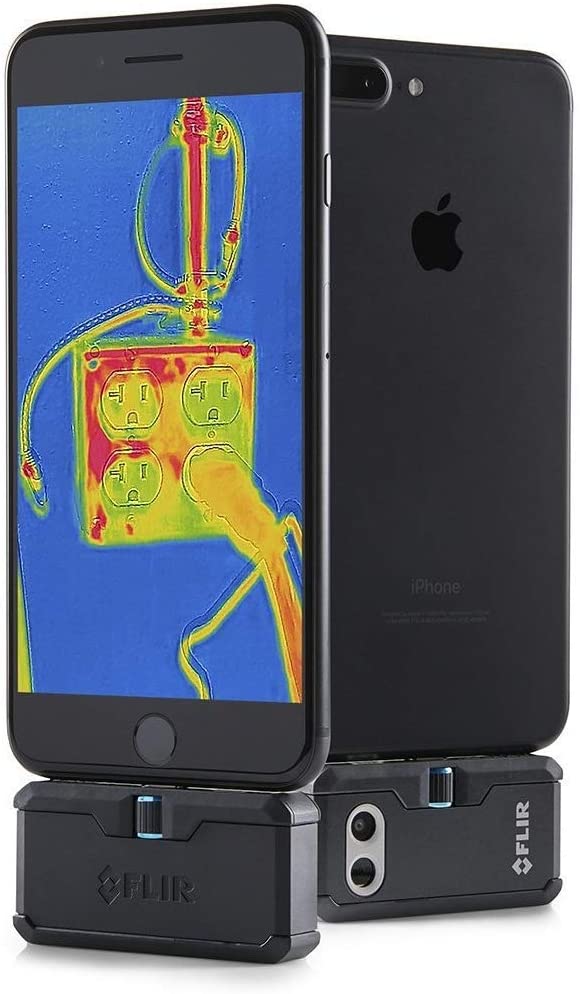 | Smartphone (2 different versions – Android & iOS) | 80 x 60 | 1 hour | No | Uses Smartphone screen | Click for more info |
Seek Thermal Compact PRO 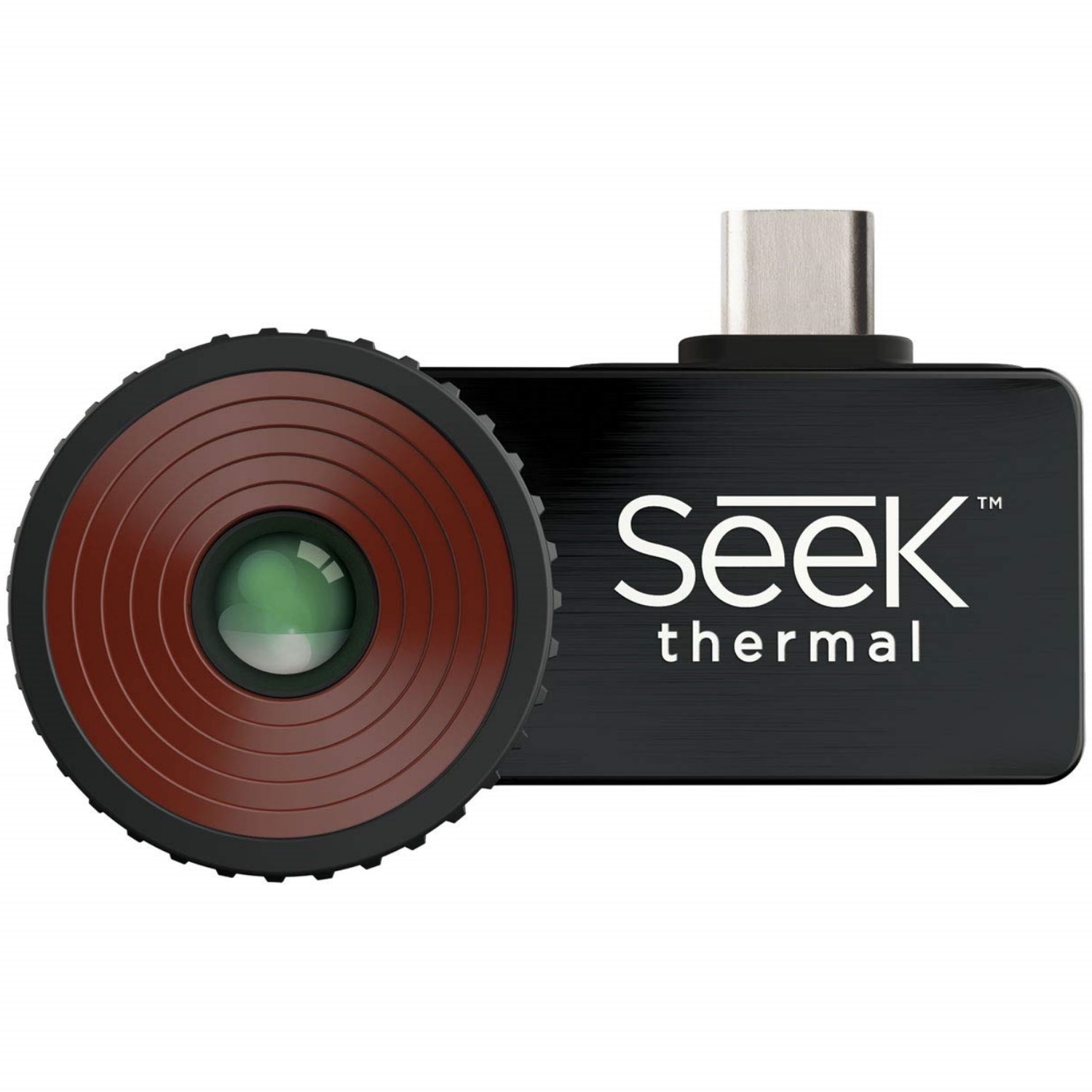 | Smartphone | 320 x 240 | No | Yes | No | Click for more info |
Seek Thermal Compact 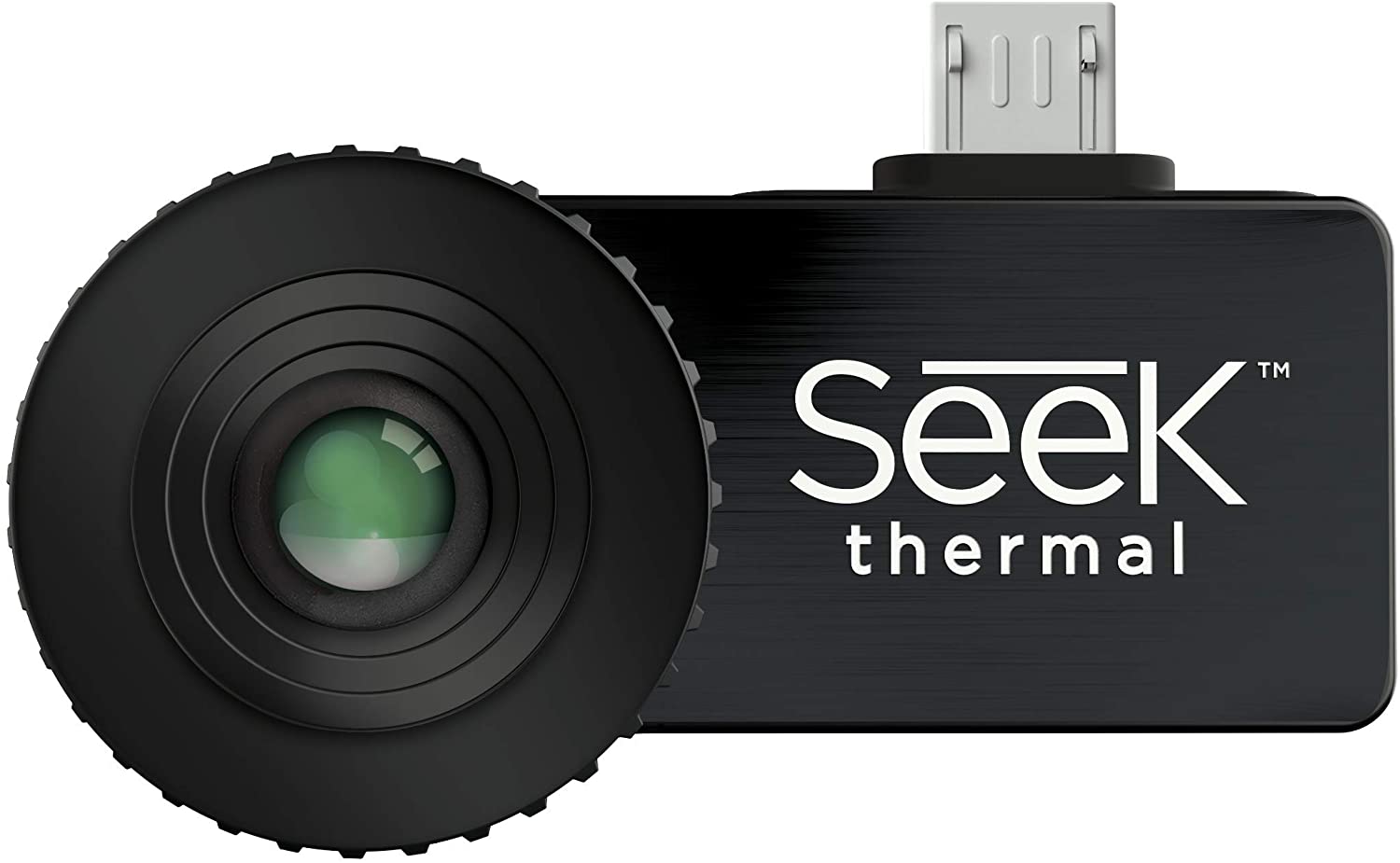 | Smartphone | 206 x 156 | No | Yes | Click for more info |
Let’s have a look at each product in particular.
FLIR ONE Pro
| Product | Type | Resolution | Battery capacity | Waterproof | LCD screen | Price |
|---|---|---|---|---|---|---|
FLIR ONE Pro  | Smartphone (2 different versions – Android & iOS) | 160 x 120 | 45 minutes | No | Uses Smartphone screen | Click for more info |
It comes in 3 different versions, you can have it with a USB-C or micro USB connector if you have an Android smartphone or with a Lightning port to connect it to your iPhone and iPad. You can’t change the connector so you have to choose the one you want beforehand.
The thermal camera module itself is very small, but Flir Systems have managed to put in a visual camera and a 160 x 120 Infrared sensor that outputs 19,200 pixels (The same pixel size as the one on the thermal sensor of the Flir C5) to give you the full MSX image enhancement experience and then somehow, they even found room for a 350mah rechargeable battery. The problem is that the battery only lasts for 45 minutes up to an hour and you can’t charge it from your phone, you have to do it separately. The battery charging time is approximately 1 hour as well.
But that is the only downside of the Flir because in all other respects it performs great. It has a wide temperature range between -4 -> 752°F( -20 to 400 C), and a thermal sensitivity of 0.07 C. Flir states that the accuracy is +/-3° C or +/-5%, a typical percent of the difference between ambient and scene temperature These are numbers that you would normally get from bigger and professional grade handheld thermal imaging cameras. The spectral range of the One Pro varies between 8000 and 15000 nm.
Because it is a smartphone thermal imager, it uses the phone’s display as its screen and its storage for memory. To use it, you plug it into your phone and download the Flir One app from the Play Store or App store.
The app itself works fine, apart from some issues with video recording and time lapse, but it would be great if Flir were more actively involved in improving it. The MSX distance where the thermal layer and visual image are perfectly aligned is 3 meters.
In terms of features of the Flir app, it can capture photos, record video and timelapse. You get a choice of multiple color palettes, you can switch between the visual camera, infrared sensor or MSX image modes. There are settings which you can fiddle with like the gain or emissivity and it also lets you set custom points and areas where you want to measure the temperature.
It saves the images in full radiometric JPEG file format with all the thermal data embedded for every pixel, that way you can change the color palettes and play with the temperature scale later. If you are an inspector, you may find it useful that you can also put the geolocation metadata in the pictures.
It comes with a 2-10 warranty if you complete the product registration process, so you get 2 years for the device and 10 for the infrared sensor. There is also an SDK which you can access from Flir’s website to extend the infrared camera’s functionality.
FLIR ONE Gen 3
| Product | Type | Resolution | Battery capacity | Waterproof | LCD screen | Price |
|---|---|---|---|---|---|---|
FLIR ONE Gen 3  | Smartphone (2 different versions – Android & iOS) | 80 x 60 | 45 minutes | No | No | Click for more info |
The standard Flir One has a lower image resolution of just 80 x 60 which means 4 times less pixels in the thermal image, a narrower temperature range between -4 -> 248 °F (-20 to 120° C), an inferior thermal sensitivity of 0.15 as opposed to the 0.07 C on the Pro and a narrower viewing angle.
Also, even though both devices share the same app, when you plug in the standard Flir One Gen 3, it has fewer features, for example you can’t switch between image modes since you can only view the MSX Image. Just as a side note, all the cameras have a little dial, but it is not a manual focus ring, it is just the adjustable connector.
Both cameras have MSX technology and both share the same 350mah battery. But the Flir One is half the price of the Flir One Pro, so you need to take the affordable price into consideration.
FLIR ONE PRO LT
| Product | Type | Resolution | Battery capacity | Waterproof | LCD screen | Price |
|---|---|---|---|---|---|---|
FLIR ONE PRO LT  | Smartphone (2 different versions – Android & iOS) | 80 x 60 | 1 hour | No | Uses Smartphone screen | Click for more info |
The differences between the Flir One Pro vs Flir One Pro LT thermal camera for smartphones are in the image quality, the Pro has a 160 x 120 thermal resolution while the Pro LT only has an 80 x 60 sensor, meaning 4 times less pixels. The temperature range on the LT is narrower from -4°F to 248°F (-20°C to 120°C). There is also a slight difference in thermal sensitivity because the Pro has a 0.07 C sensitivity while the Pro LT only has a 0.10 C value.
Both infrared thermal imagers have MSX image enhancement and the VividIR image processing feature. The Pro LT also has the same features in the mobile app as the Pro.
Flir One vs Flir One Pro LT
Here comes the tricky bit. If you look at the datasheet for both devices you might not notice the differences between the Flir One Pro LT vs Flir One Gen 3 because they are very subtle. The thermal and visual resolution is identical on both devices and so are their temperature detection capabilities.What the Flir One Pro LT iOS pro-grade thermal camera brings in addition to the standard Flir One is the VividIR image processing technology and the additional features in the mobile app that the Pro has. The first is the ability to switch between 3 image modes, MSX, Visual Camera or Infrared Camera. The standard model doesn’t allow you to do that. You also get the option to adjust the color scale. But the downside is that those features come at an extra cost of 100$.
Now it is worth mentioning that all 3 thermal cameras for smartphones come in either an iOS version or an Android USB-C version.
Seek Thermal Compact PRO
| Product | Type | Resolution | Battery capacity | Waterproof | LCD screen | Price |
|---|---|---|---|---|---|---|
Seek Thermal Compact PRO  | Smartphone | 320 x 240 | No | Yes | No | Click for more info |
The first thing we notice is that the Seek has a higher IR resolution of 320 x 240 totaling 76,800 pixels, almost 4 times more pixels than the Flir One Pro. The biggest difference is that the Seek camera can detect heat at up to 1800 feet away while the Flir is limited to about 140.
Another important difference is that the Compact Pro uses the smartphone’s battery while the Flir uses its own. The same goes for the camera, the Seek uses the phone’s camera while the Flir has its own. Is that good or bad? Flir’s approach is better here because the alignment of the two images is better and you don’t have to always keep re-aligning them.
MSX is also greatly superior to the image blending you get on the Compact Pro, however because the IR resolution is so high on this device you don’t always need to use the visual camera to tell what you are looking at.
In terms of temperature range, the Seek CompactPro is more oriented towards the lower temperatures from -40F° to 626°F (-40°C to 330°C) compared to the Flir’s -4 -> 752°F( -20 to 400 C).
The app on the Flir is nicer to use and more reliable than the Seek Thermal app, but the functionality is similar because the Seek app can also capture video, still images just without a timelapse function. The Seek also comes in 3 versions with micro USB and USB-C for Android and Lightning for iPhone.
Given that these all-purpose thermal imaging cameras have the same price, it can be hard to choose between them but you won’t go wrong with either because each have their pluses and minuses.
Seek Thermal Compact
| Product | Type | Resolution | Battery capacity | Waterproof | LCD screen | Price |
|---|---|---|---|---|---|---|
Seek Thermal Compact  | Smartphone | 206 x 156 | No | Yes | Click for more info |
The standard Compact has a lower resolution of 206 x 156, so less than half the number of pixels and a lower detection range of 1000 feet compared to 1800 feet on the CompactPro. Also, the standard Compact has a wider viewing angle.
This camera for iPhone and Android also has a few additional features like adjustable emissivity (Something which most cameras have as standard) and Span / Level control which is useful when you want to highlight the object that you are measuring.
Seek Thermal Compact vs Flir One
The Seek Thermal Compact has a much higher IR resolution of 206 x 156 pixels compared to the Flir One with just 80 x 60 pixels, which translates to more than 6 times more detail in the thermal images. Its temperature range is much wider between -40 -> 626 °F (-40 to 330° C) compared to the Flir One which only has a -4 -> 248 °F (-20 to 120° C) range.Its thermal sensitivity is also superior at 0.07 C compared to the Flir’s 0.15 C and here lower is better. Of course, it doesn’t have MSX image enhancement or a visual camera as it uses the phone’s camera. It doesn’t have a built-in battery either as it makes use of your phone’s battery. It does come with a waterproof carrying case included in the package while for the Flir you have to buy an extra one. It costs 50$ more than the Flir, but you do get much higher specs.
Seek Thermal Compact vs Seek Thermal Compact XR
The main differences between these two thermal imagers are the detection range, field of view and price. The Compact XR can detect heat up to 1800 feet compared to the 1000 on the standard Compact. But you have to keep in mind that its viewing angle is much narrower at 20° compared to 36° on the Compact. The CompactXR also costs 50$ more.Basically the CompactXR is an extended-range version of the Compact with the same infrared resolution.
We thank you for taking the time to read our materials and invite you to check out our other articles for reviews on compact thermal cameras and industry news.
Our Score
